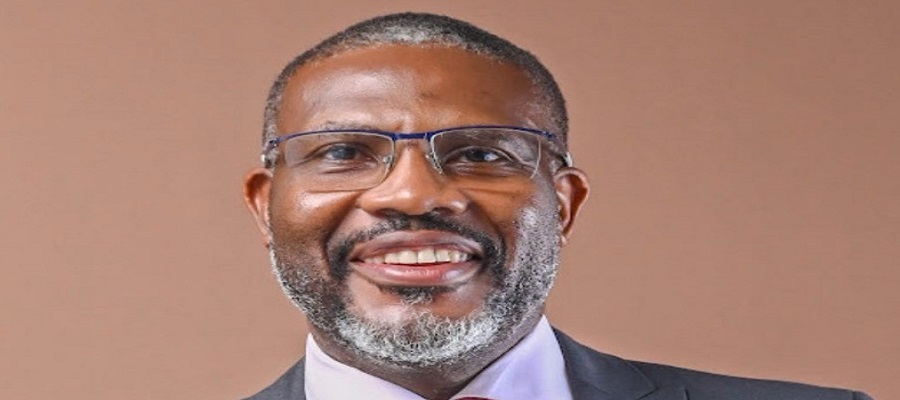Telecom
Sophos CryptoGuard Technology Reveals How Attackers Increased Their Use of Remote Ransomware by 62% Annually

Sophos, a global leader in innovating and delivering cybersecurity as a service, has released a report, titled “CryptoGuard: An Asymmetric Approach to the Ransomware Battle,” which found that some of the most prolific and active ransomware groups, including Akira, ALPHV/BlackCat, LockBit, Royal, Black Basta, are deliberately switching on remote encryption for their attacks.

In remote encryption attacks, also known as remote ransomware, adversaries leverage a compromised and often underprotected endpoint to encrypt data on other devices connected to the same network.
Sophos CryptoGuard is the anti-ransomware technology that Sophos acquired in 2015* and is included in all Sophos Endpoint licenses. CryptoGuard monitors the malicious encryption of files and provides immediate protection and rollback capabilities, including when the ransomware itself never appears on a protected host.
The unique anti-ransomware technology is a last line of defense in Sophos’ layered endpoint protection, only activating if an adversary triggers it later in the attack chain.
CryptoGuard detected a 62% year-over-year increase in intentional remote encryption attacks since 2022.
“Companies can have thousands of computers connected to their network, and with remote ransomware, all it takes is one underprotected device to compromise the entire network. Attackers know this, so they hunt for that one ‘weak spot’—and most companies have at least one. Remote encryption is going to stay a perennial problem for defenders, and based, on the alerts we’ve seen, the attack method is steadily increasing,” said Mark Loman, vice president, threat research at Sophos, and the co-creator of CryptoGuard.
Since this type of attack involves encrypting files remotely, traditional anti-ransomware protection methods deployed on remote devices don’t “see” the malicious files or their activity, failing to protect them from unauthorized encryption and potential data loss. Sophos CryptoGuard technology, however, takes an innovative approach to stopping remote ransomware, as explained in the Sophos X-Ops article: analyzing the contents of files to see if any data became encrypted to detect ransomware activity on any device in a network, even if there is no malware on the device.
In 2013, CryptoLocker was the first prolific ransomware to utilize remote encryption with asymmetric encryption, also known as public-key cryptography. Since then, adversaries have been able to escalate the use of ransomware, due to ubiquitous, ongoing security gaps at organizations worldwide and the advent of cryptocurrency.
“When we first noticed CryptoLocker taking advantage of remote encryption ten years ago, we foresaw that this tactic was going to become a challenge for defenders. Other solutions focus on detecting malicious binaries or execution. In the case of remote encryption, the malware and execution reside on a different computer (unprotected) than the one having the files encrypted. The only way to stop it is watching the files and protecting them. That’s why we innovated CryptoGuard,” said Loman.
“CryptoGuard does not hunt for ransomware; instead, it zeroes in on the primary targets—the files. It applies mathematical scrutiny to documents, detecting signs of manipulation and encryption. Notably, this autonomous strategy deliberately does not depend on indicators of breach, threat signatures, artificial intelligence, cloud lookups, or prior knowledge to be effective. By focusing on the files, we can change the power balance between the attackers and the defenders. We’re increasing the cost and complexity for the attackers to successfully encrypt data, so that they will abandon their objectives. This is a part of our asymmetric defense approach strategy.
“Remote ransomware is a prominent problem for organizations, and it is contributing to the longevity of ransomware in general. Given that reading data over a network connection is slower than from a local disk, we have seen attackers, like LockBit and Akira, strategically encrypt only a fraction of each file. This approach aims to maximize impact in minimal time, further reducing the window for defenders to notice the attack and respond. Sophos’ approach to anti-ransomware technology stops both remote attacks and those that encrypt just 3% of a file. We’re hoping to inform defenders about this persistent attack method, so they can properly protect devices.”
For more information, read “CryptoGuard: An Asymmetric Approach to the Ransomware Battle” on Sophos.com.
Telecom
Celebrating African Creativity: Made by Africa, Loved by the World’ Returns for Its Fifth Year

The “Made by Africa, Loved by the World” campaign is back for its fifth year, celebrating African creativity and global influence. This year’s theme, “Where Culture Meets Connection,” highlights how social media fosters conversations around cultural moments worldwide.

The campaign features three cinematic films premiering on the Meta Africa page, showcasing the groundbreaking work and personal stories of six dynamic African creatives.
These artists, from Nigeria, Kenya, Ghana, and South Africa, represent diverse disciplines, including rap, animation, dance, photography, fashion, and videography.
Here are some of the featured talents:
- Ladipoe (Nigeria) – A BET-nominated rapper known for blending global hip-hop with African rhythms.
- Fatboy Animations (Kenya) – An animation studio founded by Michael Muthiga, recognized by Forbes for its original African storytelling.
- Lisa Quama (Ghana) – A dancer who gained fame after appearing in Beyoncé’s “Already” music video.
- Gilbert Asante (Ghana) – A photographer and creative director featured in GQ and Glam Africa.
- David Tlale (South Africa) – A fashion designer whose bold designs have been showcased at major fashion events, including the Met Gala.
- Ofentse Mwase (South Africa) – A filmmaker with over 24 international awards for his unique visual storytelling.
Kezia Anim-Addo, Communications Director for Africa, Middle East & Turkey, emphasized that the campaign not only celebrates individual success stories but also showcases how culture and social media drive meaningful connections and inspiration.
Telecom
Telcos Warn of Nationwide Telecom Blackout over Diesel Shortage

Association of Telecommunications Companies of Nigeria (ATCON), has raised the alarm over a diesel supply crisis caused by an ongoing strike by the National Union of Petroleum and Natural Gas Workers (NUPENG).

Mr Tony Emoekpere, president, ATCON in a statement said that the fuel supply disruption is critically affecting telecom base stations, pushing them to the brink of a shutdown and threatening millions of mobile and internet users in the region.
“This strike, which stems from the persistent harassment of tanker and petroleum product drivers by police officers in Lagos State, has effectively halted all truck loading operations and fuel movements,” Emoekpere stated.
He explained that diesel supply to telecom infrastructure has been severely impacted, leaving critical sites with dangerously low fuel levels.
According to him, if urgent measures are not taken, the situation could escalate into a full-blown network blackout, disrupting essential services, including mobile and internet access, business operations, emergency response systems, and daily communications.
ATCON has called on the governors of Lagos and Ogun states to intervene immediately by facilitating the release of diesel from depots to telecom operators to prevent further deterioration of the situation.
“This is not just a telecom issue—it is a national emergency that could cripple economic activities and compromise public safety,” Emoekpere stressed.
The association also appealed to security agencies and petroleum unions to resolve the crisis swiftly to safeguard Nigeria’s connectivity and economic stability.
ATCON emphasised that a prolonged disruption in fuel supply to telecom infrastructure could have far-reaching consequences for both businesses and individuals who rely on stable communication networks for daily operations.
Telecom
Nigerians Spend N5.3 Trillion on Telecom Services

In 2023, Nigerians spent a total of about ₦5.3 trillion on telecommunications services, which includes calls, data, SMS, and other telecom services, according to the Leadership.

Specifically for voice calls, Nigerians made approximately 408.5 billion minutes of local calls, generating around ₦3.28 trillion from outgoing calls and ₦3.23 trillion from incoming calls, totaling about ₦6.51 trillion in call-related revenue according to projections based on 2023 call volumes and tariff data.
However, the ₦5.3 trillion figure represents the overall telecom sector revenue, with voice calls being a major component but also including data and other services.
For individual spending, MTN subscribers spent an average of ₦2,508 monthly on voice calls in 2023, showing a 14.4% increase from 2022, while Airtel customers spent about ₦1,694 monthly on voice calls.
Total telecom spending (calls, data, SMS, etc.): ₦5.3 trillion in 2023
Estimated revenue from voice calls alone: around ₦6.5 trillion based on call minutes and tariffs
Average monthly spending on calls per subscriber: ₦1,694 to ₦2,508 depending on the network

 Telecom3 days ago
Telecom3 days agoCelebrating African Creativity: Made by Africa, Loved by the World’ Returns for Its Fifth Year

 E-Financial3 days ago
E-Financial3 days agoCBN Introduces AML to Fight Financial Terrorism, Gives Banks Deadline

 Broadcasting3 days ago
Broadcasting3 days agoLuft Pay TV Launches in Lagos, Promises to Revolutionize Entertainment

 General News3 days ago
General News3 days agoOver 250,000 Cyberattacks Disguised as Anime – Report

 E-Financial3 days ago
E-Financial3 days agoPeter Obi Denies Secret Meeting with Tinubu over Fidelity Bank

 E-Financial3 days ago
E-Financial3 days agoPremiumTrust Bank Reassures Customers of Continued Security after Cyberattack Foil

 E-Financial3 days ago
E-Financial3 days agoFidelity Bank’s N10.5tr assets base reinforces stakeholders’ confidence -Insiders bid for more equity stakes

 E-Business3 days ago
E-Business3 days agoINEC Sets Up AI Division to Strengthen Electoral System























